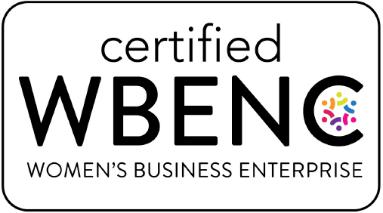The Art of Rebranding To Avoid Trademark Infringement Or Rejected Trademark Registration Applications
Authored by:

Justin R. Muehlmeyer
Patent Attorney
All Posts by Justin
Sometimes it is just best to rebrand. Perhaps you received a cease and desist letter from a prior user of a similar trademark alleging trademark infringement and demanding that you cease the use of your trademark. Perhaps you received an office action from the U.S. Patent and Trademark Office (USPTO) refusing to register your trademark because it is likely to be confused with other trademarks the USPTO found in their search. Perhaps you did your own trademark clearance search and found prior users of similar or identical trademarks that you might be infringing.
Don’t worry. It is not the end of your business. Here are some tips.
1. Maybe you only need to slightly modify your trademark to avoid trademark infringement.
Talk to an experienced trademark attorney about whether a slight modification to your mark might be enough to get around the issue or if a more drastic change needs to happen. It might be possible to modify your mark only slightly such that existing customers don’t notice the change while modifying it enough to avoid the problem. Trademark infringement turns on this question: is a consumer of the goods and services likely to be confused as to the source of the goods and services?
This “likelihood of confusion” standard is rather subjective, as you can imagine, turning on a number of factors outlined by courts over the years. But subjectivity leaves room for advocacy and argument. An experienced trademark attorney can help you decide if you need to only slightly modify your mark or if it is best to rebrand entirely.
2. Know what you are up against.
Given the “likelihood of confusion” standard, there is sometimes room for marks that are similar or even identical in appearance to be used if there is no “likelihood of confusion” as to the source of the goods and services. If the marks are used in different industries, channels of trade, types of customers, or the nature of the goods and services are different enough, there might not be a problem.
Any and all information you can learn about the other trademark owner, the better position you can be in to negotiate a resolution or figure out a strategy to avoid trademark infringement.
3. Look at rebranding as an opportunity to reconnect with your customers.
Of course, your customers or investors do NOT need to know that you are changing your trademark because of possible or alleged trademark infringement. Your new brand can be launched as a way to reconnect with your customers in a new and exciting way. It is an exciting opportunity to restate or sell your company’s core values, giving your business a facelift and reminding your customers that your business is an evolving entity that grows as a person grows. You might just find that your business grows as a result of the rebranding.
4. Consider negotiating with your adversary.
If you are considering rebranding because someone is alleging that you are infringing on their trademark, this can allow you to negotiate. Even if you are sure they are in a better position, don’t let them bully you or rush you. Make sure you have plenty of time to make the change in a way that is convenient and best for you. Reasonable adversaries should want that the change goes smoothly.
5. Do it right this time.
Talk to an experienced trademark attorney about how to choose a trademark that won’t be problematic. The more random or arbitrary that the words of the trademark are in relation to what the goods and services sold using the trademark are, the better – be creative! Avoid common words or phrases – invent a word!
It goes without saying, you can avoid problems by doing your own trademark clearance search before you get too invested in marketing with your new trademark.
Additionally, we recommend that you file an intent-to-use trademark registration application at least six months before you actually launch the trademark to see if the USPTO finds any potentially conflicting marks that would bar your registration when they finally examine your registration application.
If you can’t wait for your trademark registration application to be examined, have a professional do a comprehensive search so you can start using the trademark with some confidence.
Peacock Law P.C. can help you through this. Whatever you are going through with your trademarks, we can help.
Give Justin Muehlmeyer a call at 505-998-6117!


